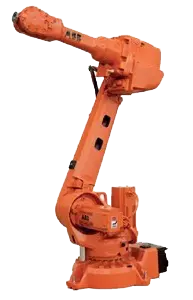Considerations for Selecting a Robotic Welding Power Source
Automating welding applications involves more than just selecting an industrial robot. There are several components that are needed for a complete robotic welding system. One of the most vital components is the power source. The power source is the center a robotic welding system. Power sources provide energy in order to create the heat needed to melt metal workpieces and bond them together. Selecting a robotic welding power source is critical to the success of your welding application. With so many different options available the selection process may seem overwhelming or confusing. When automating with industrial robots having a clear understanding of your application requirements and a plan can help simplify this process. Below are some of the most important considerations for selecting the best power source.
Welding Robot
The first consideration for selecting a power source is the welding robot that will be integrated with it. Most major robot brands and welding equipment brands can be integrated with one another; however, some are more compatible than others. Prior to buying a used robot, you want to be sure the robot and power source communication protocols are suitable for each other. In other words, they should be able to understand each other’s’ programming language in order to successfully operate together. Lincoln Electric’s PowerWave power sources are commonly used alongside FANUC’s ArcMate robots. For instance, the Lincoln Powerwave i400 can be integrated will with the FANUC Arc Mate 100ic. While Yaskawa Motoman and ABB welding robots are typically deployed with Miller Auto Axcess power sources.Welding Application
The type of welding application you are looking to automate is also critical to the selection of your power source. Will you be automating a MIG, TIG, flux core, or spot-welding process? Will the robotic system be used for one specific process or multiple? Answering these questions can help narrow down your options. Many power sources are designed to cover multiple arc welding applications, but you will want to be sure your selection is appropriate for your welding type. A power source will dictate the type of weld being produced. A Lincoln Powerwave 455M would be an ideal choice for automating MIG and TIG welding applications.Welding Parameters
Other aspects to consider are the welding parameters such as duty cycle, input power, and welding output. Duty cycle defines the amount of time within a 10 minute period that a power source can safely produce a welding current at its full output. It is often expressed as either a percentage or a ratio. If a power source had a duty cycle of 60% this would mean that it could be on at its full output for 6 minutes of the 10 minute cycle. The remaining 4 minutes it would need to be off to cool down. For robotic welding the recommended duty cycle is 100% over 290 amps. Defining the duty cycle is important to prevent damage from occurring to your power supply and welding system failures.Input power is the voltage required to run the power source and depends upon its use. For lighter use less voltage is needed, but higher voltage is required for heavier use. Welding output is the number of amps needed for a welding current and is factored into the duty cycle. For robotic welding the recommendation is over 330 amps with a duty cycle of 50% to 100%.




